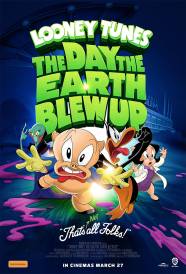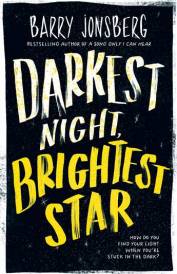Bach Violin Concertos Tour
The Australian Chamber Orchestra (ACO) demonstrates the impassioned magic and enduring genius of Johann Sebastian Bach this autumn with a much-anticipated national tour of Bach Violin Concertos. Performing from 2 to 12 April 2017 in concert halls across Australia, the ACO brings to life Bach's mesmerising compositions for violin in a special homage to one of the greatest composers of all time.
Artistic Director Richard Tognetti is at the helm for these performances, joined by Principal Violins Helena Rathbone and Satu Vänskä, as the ACO showcases Bach's works for solo violin, violin and orchestra, two violins and orchestra, and three violins and orchestra. The tour follows the ongoing success of Tognetti's recordings of Bach, which earned him three consecutive ARIA awards for Best Classical Album. Australian audiences have the opportunity to experience this fearless musician's vision of Bach's magnificent writing for violin and hear these beloved works anew.
Rounding out the program is the Sarabande, the emotional centrepiece of Bach's Fourth Cello Suite, performed by ACO Principal Cello, Timo-Veikko Valve, along with two glorious symphonies from the 'Father of the Symphony", Franz Joseph Haydn, who wrote more than one hundred of them. Helena Rathbone considers these two as among his greatest. 'Each symphony you pull out of the Haydn hat is so imaginative, so extraordinary, and so different. We've played a lot of them, but when it comes down to it, you pick your favourites, and in this concert, we present two crackers," says Rathbone.
Tognetti grew up listening to the pioneers of the early music movement at a time when Karajan was the Emperor. 'They were radical misfits some of whom made ambit claims of knowing what the composer intended, whereas the attraction was a new and vibrant way of playing this great and little explored music from the baroque," Tognetti explains.
Tognetti soaked up performances by Dutch, English and Austro-German pioneers. 'Anner Bylsma the first cellist to convincingly record the Bach Suites on period instruments; the great Frans Brüggen, who conducted my first performances of Mozart's last symphonies with the ACO; and Christopher Hogwood who I worked a great deal with and who forged a strong relationship with the ACO – he was the pioneer of the early music movement. Hogwood once said, -You can play things stylishly on the wrong instruments or unstylishly on the right instruments'. So although much of the early music movement was based on dogma (spurious at that), there was also something liberating about it: we had the gate open to an earlier age, whilst forging a new and exciting path." He adds, 'Bach was, in many ways, like Shakespeare – he wanted his art to evolve and not be set in stone. Arguably, more than just about any other composer, you can adapt, transform and really experiment with Bach's music – it's like clay."
Tognetti says to this day, he continues to meet people who define Bach's genius in terms of mathematic precision and technical mastery, but for him Bach's timeless appeal lies in the sheer aesthetic beauty of his sound world. 'When I was a kid, I gave my mum a recording of Bach's Brandenburg Concertos with Karl Richter and the Münchener Bach Orchestra (very old fashioned and stodgy) as a birthday present. This was the first recording I heard of Bach's Brandenburgs – incidentally, Nick Drake was listening to the Brandenburgs the night before he died! Around the same time, my father took me to see Tarkovsky's Solaris which features the Chorale Prelude -Ich ruf zu dir, Herr Jesu Christ'. Its sense of other worldliness and suggestion of the numinous has never left me."
For these performances, the ACO will play on gut strings with period bows. 'We like the rawness, roughness and soft hue of the sound these strings produce," Tognetti explains. 'We have little to no idea what Bach or Haydn intended their music to sound like, so we will offer one notion of how it could sound today."
Tognetti adds that the instruments play a vital role in bringing the past into the present. Many of the players, including the soloists, play instruments crafted around Bach's era. Tognetti performs on a 1743 Guarneri del Gesù violin, Rathbone a 1759 Guadagnini violin, Vänskä a 1728/29 Stradivarius violin, and Valve a 1729 Guarneri filius Andreæ cello. Tognetti's violin may even have been owned and lost in gambling by Paganini, the greatest violinist of all time. The three violins were made by leading Italian craftsman who represent the triumvirate of revered instrument makers of that time. Like Bach and Haydn, they revolutionised their craft and would go on to influence musicians for generations to follow.
PERFORMANCE DATES
Arts Centre Melbourne, VIC, Sunday 2 April, 2.30pm
Arts Centre Melbourne, VIC, Monday 3 April, 7.30pm
Adelaide Town Hall, SA, Tuesday 4 April, 7.30pm
Perth Concert Hall, WA, Wednesday 5 April, 7.30pm
City Recital Hall, NSW, Saturday 8 April, 7.00pm
Sydney Opera House, NSW, Sunday 9 April, 2.00pm
QPAC Brisbane, QLD, Monday 10 April, 7.00pm
City Recital Hall, NSW, Tuesday 11 April, 8.00pm
City Recital Hall, NSW, Wednesday 12 April, 7.00pm
MORE
- Eat Your Heart Out Deaf Havana Tour
- Polish Club Christmas in December Tour
- Alison Moyet The Other Tour with Katie Noonan...
- The Aints play The Saints
- The Original Wailers Australian Tour Dates
- Don Broco Announce First Ever Australian Tour
- Lakeside Twilights
- An Evening with Mario Frangoulis
- Cold Chisel Hobart Show
- Tyler Hilton and Kate Voegele Tour





